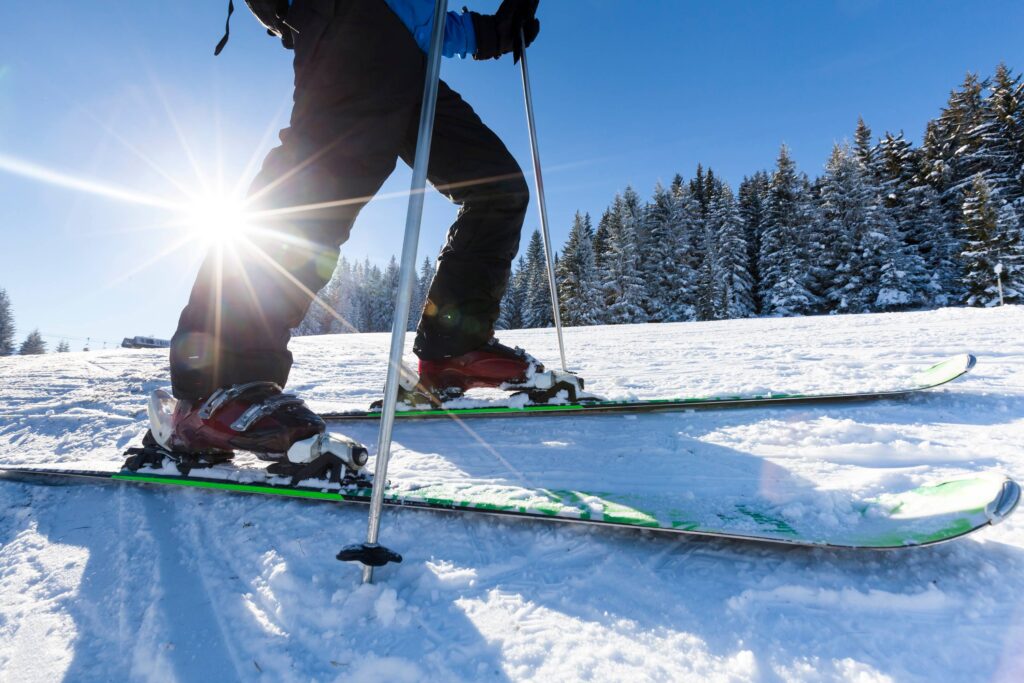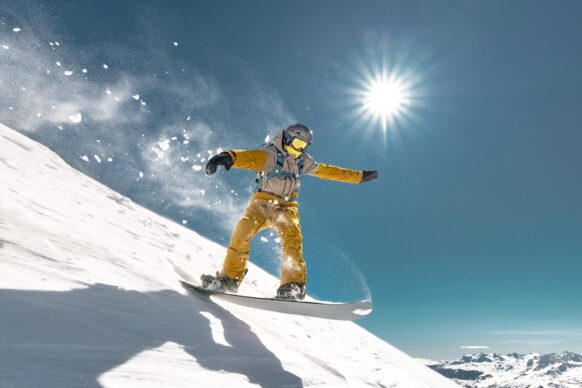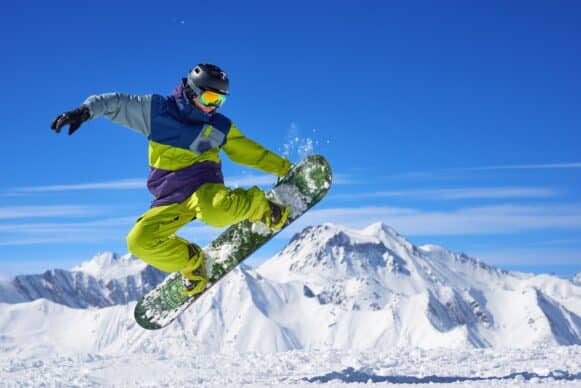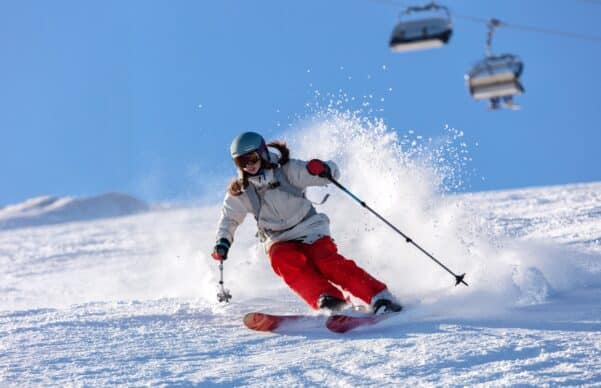by Miles Nicholas, PT, DPT, CSCS, FDN-C

As the leaves continue to fall off the trees and resorts begin to announce their opening days for the upcoming ski/snowboard season, it’s important to think about more than just the excitement of spending time in your favorite trees, moguls, bowls, and groomers. It’s critical to consider if your body is conditioned to tolerate the significant demands that skiing/snowboarding imposes upon it in order to maximize performance and reduce the risk of injury.
Specific to skiing, research demonstrates 2-3 injuries per 1000 skier days at the recreational level, with 33% of these injuries occurring at the knee. Roughly half of these knee injuries are anterior cruciate ligament (ACL) rupture (15-20% of all ski injuries), which leads to lengthy conservative or post-operative rehabilitation. Often treated surgically, returning to your previous level of function in sport isn’t a guarantee. Drawing from evidence in a broad array of sports, only ~42% of non-professional athletes return to competitive sport after ACL reconstruction. While recreational skiing is not a competitive sport per se, we want this data to impress upon mountain sport athletes that an injury risk-reduction program (ACL and otherwise) is well worth the time spent in order to increase the likelihood of a high-performing and healthy season.
Improving an individual’s neuromuscular capacities via a program to improve general physical preparation is likely where our efforts are best placed in order to reduce the risk of ACL injury. We’ll break down neuromuscular training into strength activities, power activities, and plyometric activities, with dynamic balance/coordination intrinsic to the exercises selected.
Some activities that are useful for strength development are squats, deadlifts, lunges, and single-leg RDLs, although other movement patterns like step-ups, hip thrusts, and single-leg squats work well too. For these, select a weight (dumbbell/kettlebell/barbell) that allows 3 sets of 6 repetitions, with 2-4 reps left in reserve for each set. In other words, perform 6 reps with a weight that you could’ve performed 8-10 reps. Ensure you perform the “up” phase of the movement as fast as possible, although you will find you actually move at a medium-slow speed.
Exercises for Strength
Trap Bar Deadlift
Single Leg RDL
Goblet Squat
Forward Lunge
Four activities that are useful for power development are weighted countermovement jump squats, kettlebell swings, power cable pull-throughs, and power step-ups. For these, select a light to medium weight which allows you to move relatively fast for 3 sets of 3-5 repetitions at maximum effort.
Contrast training, where you perform a strength exercise followed by a power exercise with a similar movement pattern, is a useful way of maximizing output during the power exercise. It is also more time-efficient this way! Therefore, a lunge would pair well with a power step-up; a deadlift would pair well with a kettlebell swing/cable pull through, etc. If you decide to perform the power and strength exercises separately, perform the power exercises first in your workout before you are fatigued from strength training.
Exercises for Power
Power Step Up
Kettle Bell Swing
Countermovement Resisted Jump
Cable Pull Through
A handful of useful drills from a plyometric standpoint are continuous forward jumps while moving laterally over a line, continuous split stance jumps in place, and continuous lateral bounds. For plyometric movements, 3 sets of 3-8 repetitions work well, ensuring the set is terminated before the onset of fatigue. Plyometrics are generally performed after a dynamic warm-up, prior to lifting, when you are fresh. They can also be combined into a contrast training set. For example: a strength-oriented squat, followed by a power-oriented squat, followed by a plyometric squat pattern (20-30 seconds between movements, 2-3 minutes between sets).
Plyometric Movement Drills
Split Stance Alternating Jumps
Forward Jumps Over Line
Continuous Lateral Horizontal Bound
With these principles of strength, power, and plyometric training in mind; it’s easy to structure a workout. Pick 1-2 movements from each category, potentially combining them into contrast sets as mentioned above. Follow these movements up with 1-2 accessory exercises (trunk/core, hips, calves etc.) and wrap up with some conditioning if desired. While not the focus of this article, there is a strong case to be made for including conditioning, or cardiorespiratory fitness training, as part of a comprehensive program for ski-injury risk reduction. Both low/medium intensity training for longer durations and interval training at higher intensities are useful in this endeavor.
If you’re looking to participate in an exercise program that achieves all of these aforementioned components specific to skiing/snowboarding, then look no further than our Wintervention program!




